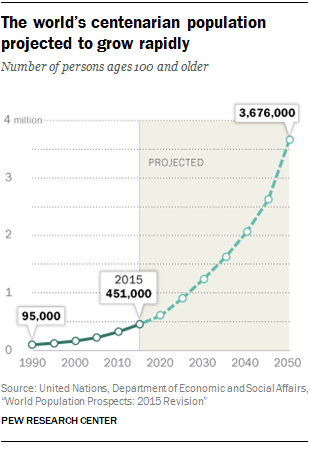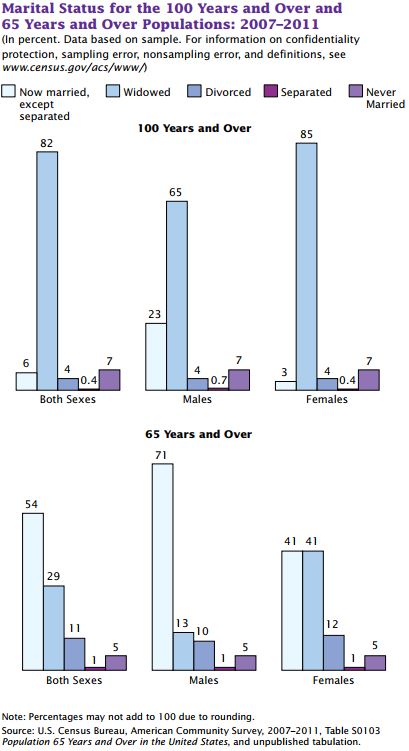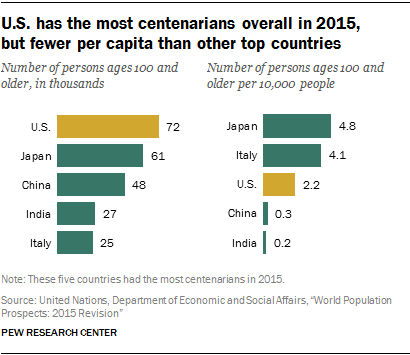More Centenarians Than Ever
Last year, a post at the Pew Research Center included some very interesting trends in population shift and aging. In a mind-boggling projection, the total number of centenarians is expected to continue to accelerate to seven times the current number of one-half million:
The full study is found in a U.S. Census Bureau report on aging, where a subset of that report states the following regarding centenarians:
Centenarians, people 100 years or older, made up a very small portion of the total population in the 2007–2011 ACS, accounting for 55,000 people (0.02 percent). By comparison, the 65 years and over population accounted for 40 million people or 13 percent of the total population. The majority of centenarians were female (81 percent). Women were also the majority of the 65 years and over population (57 percent). This disproportionately female representation in both the 65 years and over and centenarian populations was expected, since sex differences in mortality over time contribute to higher percentages of females than males at older ages.
Want to live to 100? Then get married??
From the same report, some very interesting statistics emerge regarding marital status:
U.S. Leading the Total Count, But Fewer Per Capita
What Could Possibly Go Wrong?
Aside from a number of questions for social scientists, what could possibly go wrong with living longer? (Which seems to correspond with fulfillment in life.) Life insurance caps. According to the Wall Street Journal, Happy 100th Birthday! There Goes Your Life Insurance, life insurance policies carry “a standard feature that…calls for the termination of the death benefit and payout of all of the built-up savings when the policyholder reaches the specified age.” This is an interesting challenge as it was simply not an issue in the fairly recent past, “the limits weren’t an issue in the many decades when very few people lived beyond 100. But they increasingly are a problem for the U.S. life-insurance industry as more people become centenarians.”
See the study in brief here and the full study here a the U.S. Census Bureau.



